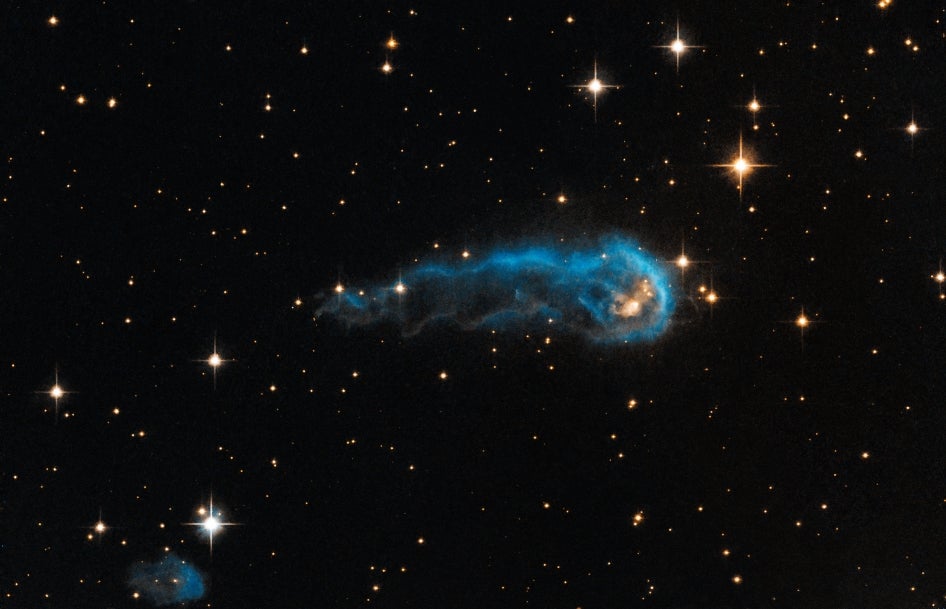Nasa spots a 'Cosmic Caterpillar' in the middle of metamorphosis
Light-year-long proto-star is battling the radiation from its neighbours to try and mature into a star

Your support helps us to tell the story
From reproductive rights to climate change to Big Tech, The Independent is on the ground when the story is developing. Whether it's investigating the financials of Elon Musk's pro-Trump PAC or producing our latest documentary, 'The A Word', which shines a light on the American women fighting for reproductive rights, we know how important it is to parse out the facts from the messaging.
At such a critical moment in US history, we need reporters on the ground. Your donation allows us to keep sending journalists to speak to both sides of the story.
The Independent is trusted by Americans across the entire political spectrum. And unlike many other quality news outlets, we choose not to lock Americans out of our reporting and analysis with paywalls. We believe quality journalism should be available to everyone, paid for by those who can afford it.
Your support makes all the difference.Nasa’s Hubble telescope has spotted a light-year long cloud of interstellar gas and dust that they have dubbed a ‘Cosmic Caterpillar’.
And like its namesake, this caterpillar is in the middle of a metamorphosis with scientists eagerly watching to see what manner of beast will finally emerge.
The head of the object where the matter is most dense is a protostar, an early stage in the evolutionary life of the star, where dense spots of matter slowly attract more material through gravity to become young stars.
However, astronomers are doubtful that the caterpillar will ever pull itself together and gather enough material to become a star in its own right.
Standing in the way are 65 O-type stars - the brightest type of stars known to scientists. These objects, seen to the right of the below image, are busily blasting the caterpillar with ultraviolet radiation, smearing its matter across space and sculpting out its current shape.
These 65 O-types are part of the Cygnus OB2 association, a cluster of over 500 stars (mostly comprised of the less-luminous B-type) with a total mass 30,000 times that of our sun.
The caterpillar – also known by its less catchy designation, IRAS 20324+4057 – might still gather material quicker than it is losing it, but scientists are unsure of the final outcome.
The whole cosmic drama is taking place 4,500 light years away in the Cygnus constellation.

Subscribe to Independent Premium to bookmark this article
Want to bookmark your favourite articles and stories to read or reference later? Start your Independent Premium subscription today.
Join our commenting forum
Join thought-provoking conversations, follow other Independent readers and see their replies
Comments